William Hurt, an American actor who starred among other things in Ken Russell's epochal film, passed away at the age of 13 on March 72 altered states, released in theaters in 1980. Here we analyze the psychedelic aspects of the film which today is recognized as the masterpiece of the "British Fellini" on a par with The Devils (1971)
di Marco Maculotti
The eccentric director Ken Russell - considered a kind of British Fellini by many critics and by the Rimini master himself - after years of bizarre stylistic research carried out with mixed results through the most disparate film genres, he found with altered states (it. States of hallucination) what was probably the creative pinnacle of his au pair career The Devils (1971), film based on John Whiting's play of the same name and inspired by the novel by Aldous Huxley The devils of Loudun, two works that in turn referred to the scabrous story of demonic possession set in France at the beginning of the seventeenth century. With altered states Russell managed to make a film that, while maintaining a strong streak weird and visionary, best combines its sci-fi and fantasy elements with a substantially dramatic plot, sprinkling it here and there with elements typical of the thriller and body or biological horror which a few years later will find its maximum standard bearer in David Cronenberg.
Inspired by the life of the American researcher and psychiatrist John Lilly, altered states tells the story of medicine professor Eddie Jessup (William Hurt), who together with his colleague and friend Arthur leads some experiments on altered states of consciousness using a sensory deprivation tank, that is an isolated environment that allows him to obtain the complete absence of external perceptions: by isolating every element of distraction, Eddie intends to make an exploratory journey into the abysses of his own conscience and of his traumatic past. Meanwhile, during a party at Arthur's house, Arthur introduces him to Emily (Blair Brown), a well-known medical scholar in his circle who will become, after some initial resistance, his wife.
Eddie, however, is too busy with his research and, after two years of marriage and as many children, the two separate. Meanwhile Eddie meets another colleague who invites him to take part in his research Mexico, where a few years ago he began to study the use of some at a scientific level hallucinogenic mushrooms by shamans of the area, descendants of the ancient Toltecs, who say they are convinced that this use can give the employers the ability to search your conscience thoroughly and to fathom a kind of collective ancestral memory. Leaving for the Mesoamerican jungles, Eddie experiences the psychedelic experience on his skin and his life changes forever. Once back home, enthusiastic about the experience he took, he continues his experiments by taking the drug inside the sensory deprivation tank, driven by the belief that the atoms of every single human being are actually millions of years old and that every single individual has the entire ancestral history of the cosmos embedded within his own consciousness, from the Big Bang to today.
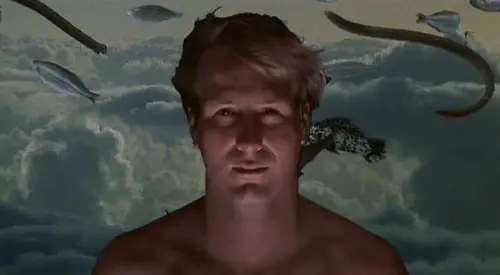

However, these experiments go too far and during one of them something goes wrong: Eddie is pulled lifeless into the sensory deprivation tank by Arthur and for four hours, due to a sudden aphasia, he is unable to pronounce a single word. The plates will then demonstrate that for the duration of the experiment its genetic structure had changed momentarily - precisely he had inexplicably developed a laryngeal pouch, atavism typical of primates. His colleagues think something terrible is unfolding and go to great lengths to put an end to the experiments, but Eddie undaunted continues his late-night searches to get around their controls. During yet another experiment he even turns into a primate and, after killing a goat and a night guard at the city zoo, he falls asleep in a cage and then wakes up naked and with few confused memories the next morning.
It is clear to everyone that Eddie has gone too far and that, by continuing his experiments, he risks putting his own life in serious danger. In the midst of yet another experiment he even transfigures himself into the "raw material" of the cosmos, that is, into the so-called protoplasm, experiencing a traumatic complete disintegration of one's individuality: in a totalizing and terrifying vision he sees the supreme - and terrible in its abnormality - Chaos of the universe at the initial moment of the Big Bang and picks up a cry of despair coming from the cosmic depths which makes him understand how only love can make sense of an otherwise empty and meaningless reality. The film ends with the image of Eddie and his wife Emily reconciled and united in one embrace cosmic.


Set in 1967 - the year of the social explosion of psychedelic drugs in America and inspired not only by the life of the aforementioned researcher John Lilly but also by the experiments of thatinner circle driven by Timothy Leary — altered states focuses on the psychedelic experience seen from both sides of its coin: now a means to know yourself through the discovery of (and access to) a further plane of consciousness, now as a perilous journey that can lead the overly arrogant experimenter to psychophysical destruction.
Eddie, played by a stalwart William Hurt who gives his character a particular vitality, personifies the scientist who, following a moment of spiritual and moral disillusionment, calls everything into question and he relies on psychotropic experience to plumb his own psychic abysses. The sudden and traumatic death of his father from cancer serves as a watershed in his life: after hearing the dying parent whisper the word "terrible", he detaches himself for ever from religion, deeming the existence of a God impossible to make one of his faithful live such a painful experience. The memory of this trauma is subsequently transfigured by him during an experience inside the sensory deprivation tank, which brings to his inner gaze a series of hallucinating visions, which constitute the most sensational sequences of the film.
Married life and the relationship with his wife Emily also suffer one hallucinatory transfiguration: in the middle of the Mexican experience Eddie is now seen in the act of possessing her fiercely in an ancient Aztec temple against a hellish background studded with fiery clouds, while at the end of the trip she appears to him as a half-reptilian creature (like the Melusina of the medieval folklore and Indian Nagini) before dissolving to dust in the middle of the desert with him; but before her he sees himself walking hand in hand with her under a scarlet sky, heading towards a flat horizon dominated by the explosion of a giant atomic bomb.
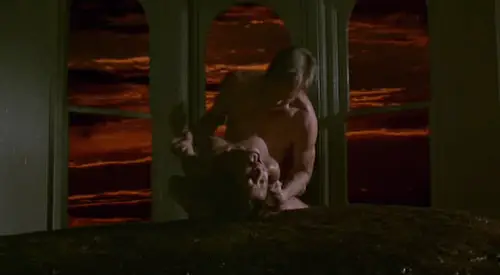
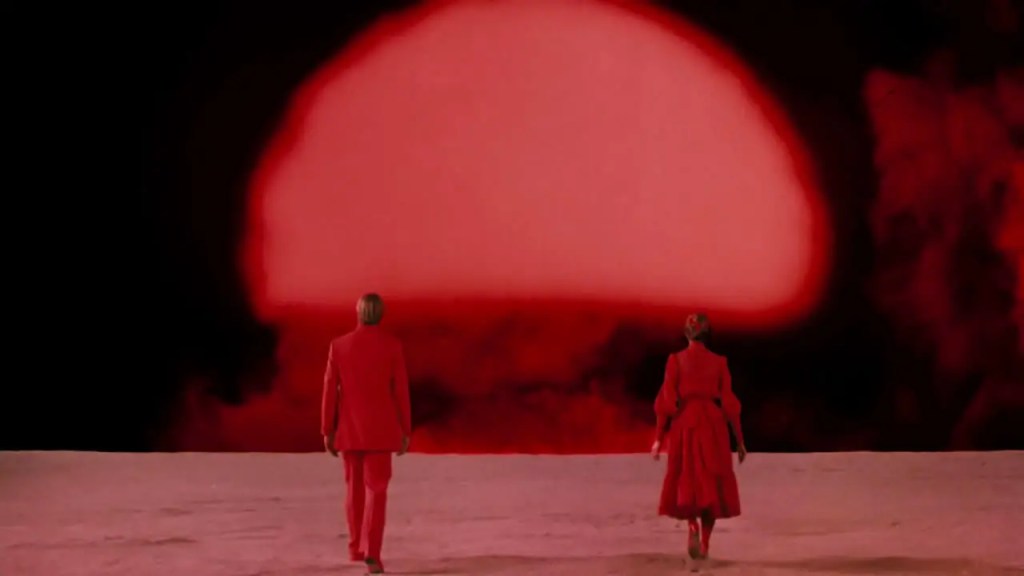
The visions relating to the creation of the universe, clearly inspired by the hallucinogenic spatial sequences of 2001: A Space Odyssey (Stanley Kubrick, 1968) are nothing short of spectacular and are worth watching the film on their own. Ken Russell, by making them explode inside the mind of his protagonist, intends to show us how he, at the limit of his experiments, on the one hand manages to capture the totality and the all-encompassing Soul of the whole. Kosmos, but at the same time on the other you become the victim of a chaotic bombardment of images that show him without the possibility of denial Chaos which governs the universe from its first instant of life, thus making it aware of the uselessness and lack of meaning of the life of every single human being considered.
The film could ideally be divided into two parts. The first, lasting one hour, based on the experiments and "hallucinations" inside the sensory deprivation tank, also illustrates to the viewer Eddie's world view on consciousness, and the role of science and spirituality. In the second part, equivalent to the last half hour, the film takes a more horror-thriller drift and culminates in Eddie's metamorphosis into primate and in the murder that, outside of himself, he carries out. Of the two, the first is certainly the most successful, thanks also to an impeccable script enriched by dialogues and ruminations that the protagonist and his colleagues rattle off with ease; in this, the screenwriter Chayefsky is able to "indoctrinate" the viewer on the concepts - partly derived from the studies of Leary and Lilly - which underlie the story and, consequently, to lead the viewer to be determined existential questions once you have finished watching the film.
The second part of the film appears weaker indeed: in the opinion of the writer it would have been better to develop the story on a more psychic level and frankly, Eddie's transformation into a primate can appear as a stylistic solution that could have been done without. . If nothing else, the ending anticipated by the latest exceptional psychedelic vision - albeit a bit conventional and melodramatic - rehabilitates the film. Finally, an honorable mention for the splendid soundtrack by John Corigliano, which, not surprisingly, received an Oscar nomination.
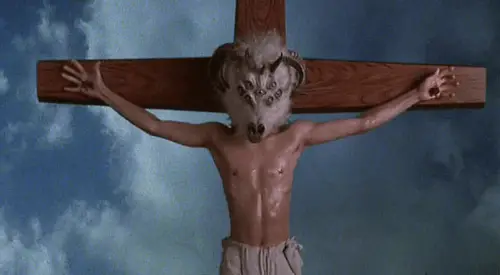
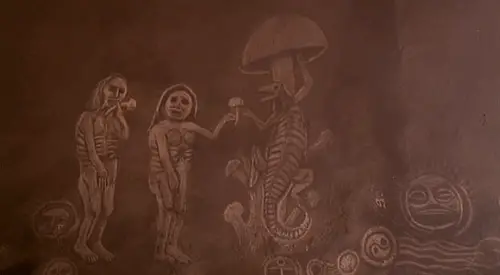

The commentary on the film is very interesting. I remember seeing it on first run and being very impressed by the scene around the shamanic bonfire if I remember correctly. More than a reference to Leary I see it in Castaneda and perhaps that film too must have prompted me to travel to Mexico on the mescaline tracks of the Wirikuta desert. To be reviewed. As for the Devils, I saw him at the same time in a film club on the Lungotevere in full lysergic trip (not very strong but just half a dose) and I had to stop and park and continue on foot because the Angels of the Castel S. Angelo began to do strange things in the sunny summer afternoon. Equally beautiful and tough is Huxley's book. A warm greeting. Luigi